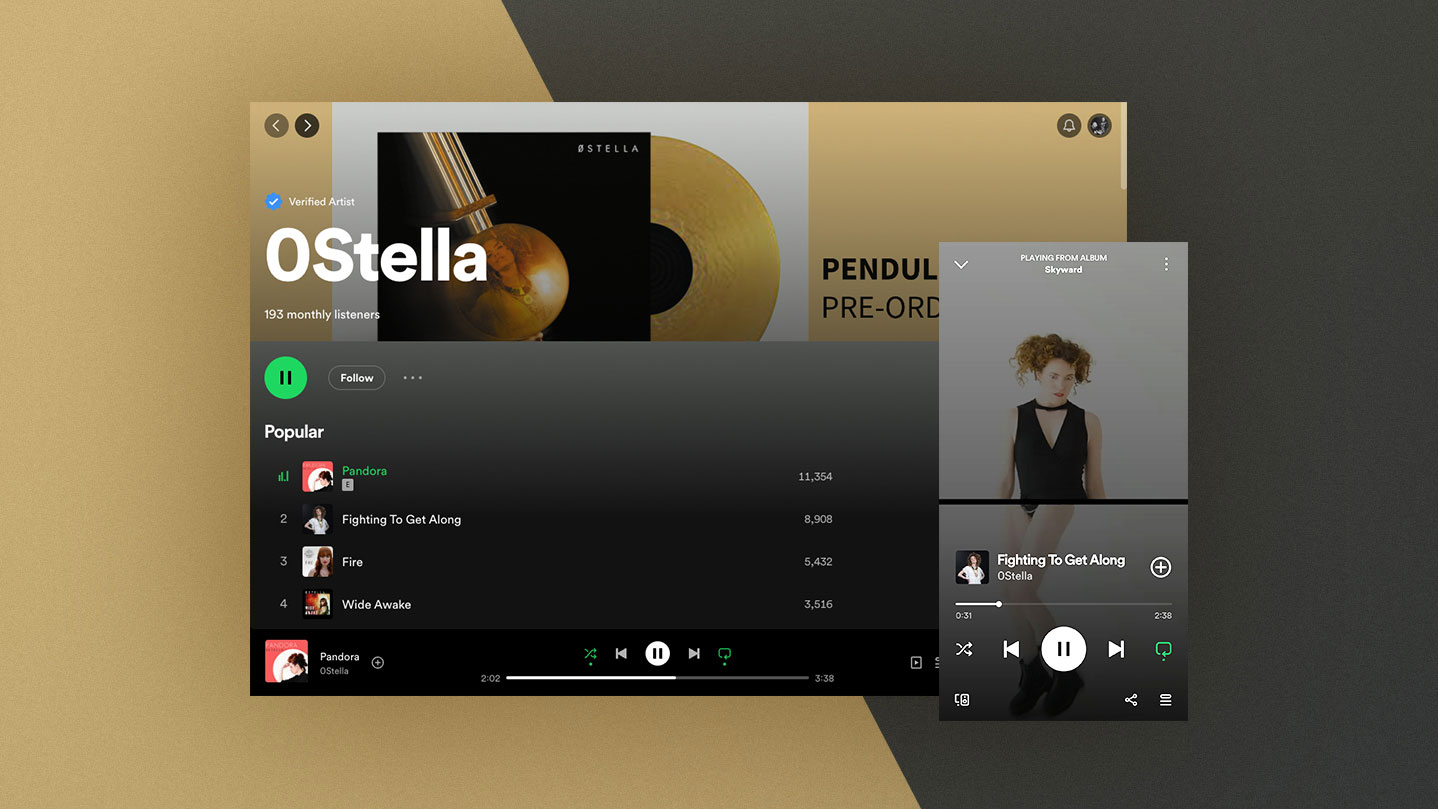A well-planned single release can open up a world of opportunities for your music career. From engaging fans with new material to introducing your music to different audiences, releasing a good single can start an exciting new chapter.
You can release a single for all kinds of reasons that help set the tone for each phase of your career. Read ahead for a guide on how to release a single, starting from picking a song to reaching new and longtime fans.
How to release a single: The first steps
Here are some factors to consider for a successful music single release:
Choosing the right single
Selecting the right song for release depends on your reasons for sharing your single in the first place. Is your single something to tide fans over between full-length releases? Or did inspiration strike, and you just can’t wait to share the new song with your fan base? In the age of streaming, it’s not at all uncommon for artists to be in the habit of regularly releasing singles instead of albums.
If you’re releasing a single to drum up excitement about an upcoming album, though, there’s more nuance to consider in your track selection, especially with the first single to be released. In general, songs under four minutes with a good hook are the ideal choice. There’s no set rule that your first single has to be slow or fast; it’s just about figuring out which of your songs provides the best introduction to your upcoming album.
Making the right choice with timing your singles often comes down to trusting your instincts as an artist. Cyndi Lauper was intentional with releasing the upbeat “Girls Just Want to Have Fun” as her first single off her debut album She’s So Unusual. Lauper has said that she chose the song over “Time After Time” because she didn’t want to launch her career with a ballad. Sometimes, picking the right single is just a matter of listening to your intuition.
Recording and production
If you’re choosing a single from an album, you might already have the song recorded and mastered. But maybe you’re releasing a standalone song that you just wrote, and you’ve only recorded a demo. In either case, to put out a single that fans can’t resist playing on repeat, good-quality production is key. See if you can get the help of an experienced producer — working with a professional producer can be a great way to learn some tricks of the trade in the studio for future recordings.
If you don’t have the resources for a professional producer, you can still record professional-quality songs in your home studio. Tools such as guitar plugins and vocal plugins are great for getting a clean, polished sound. If you’re mindful of equalization in mixing, you can also avoid recording pitfalls such as frequency masking. With the right gear and knowledge, there’s no reason you can’t create streaming-ready singles yourself.
Artwork and visuals
Creating a captivating visual to accompany your track on streaming services is another key component of releasing a single. When fans play your single on Spotify or Apple Music, they’ll see a thumbnail of your artwork along with your song title. Striking cover art is another way to grab fans’ attention when they’re browsing.
You can keep it simple with clean typography or professional artist photos, or you can create elaborate original artwork. The cover art for Lil Nas X’s “Call Me By Your Name,” for example, places the musician within Michaelangelo’s ‘The Creation of Adam.’ The most important thing is using an image that properly represents you and your song.
Setting a single release date
A well-timed release can give your single a strong running start. If your song has any connections to a particular season, holiday, or current event, releasing it around the same time can offer additional promotional opportunities. If you’ve written a surfing anthem, for example, releasing your single just ahead of Memorial Day could make your song the hit of the summer.
When selecting your single release date, it’s helpful to keep in mind everything that needs to happen before your single drops. In fact, it’s typical for your pre-single release strategies to take about one to two months prior to release day to plan and execute. You may want to create a timeline of all your pre-release tasks to keep things on track.
If you’re drafting a music single release plan, here’s what to include on your timeline checklist for a successful release:
- Visuals. Allow one to two weeks for your cover artwork to be completed. This can vary depending on whether you’re creating the visuals yourself or you’ve commissioned an artist with additional commitments.
- Audio files. It’s important to convert your song to the proper digital formats, including all metadata, for music distribution platforms. Some platforms will ask for MP3s, while others may ask for WAV files, so an audio file converter may come in handy. The good news is that iTunes includes this tool, though it’s primarily best for MP3 creation.
- CDs or vinyl. If you’re releasing physical copies of your single to sell, allow enough time for the CDs or records to be pressed. Some services can take just a couple of days, while others may take a week or more. Be sure to ask about shipping as well – that can add significant time to your schedule.
- Streaming platforms. Some platforms may need your music up to a month in advance of your release date. Additionally, you can create a “pre-save” campaign within certain platforms that allows fans to add your single to their music library ahead of time. This way, they can access your single instantly on release day. The nice cherry on top here is that you might stand a better chance of strong release-date streaming numbers.
- Marketing plan. This can include a timeline for promoting your single before and after your release date. Planning out social media posts and pitching your single to publications are often part of a musician’s marketing plan.
Building anticipation for your single drop
Social media plays an important role in creating buzz for your upcoming single. You want fans to know they have something to look forward to — and you want them to tell their friends about it too. Music promotion tactics such as teaser videos with short snippets of your single or behind-the-scenes studio footage are great for viral sharing. You can include calls to action in these videos that drive listeners toward your pre-save campaign.
Building anticipation for a music release often includes identifying a central theme or hook that you can use for streamlined promotion. This can range from a visual element in your artwork or single’s video to a theme in your single’s lyrics.
Once you’ve landed on this promotional hook, you can get creative with how you incorporate it into your overall social campaign. For example, hashtags make your content more searchable. You might want to see if any currently trending hashtags relate to your promotional hook so that potential fans can more easily find you.
Distributing your single
If you want fans to hear your single, it helps to know exactly where and how your fans are listening to music. You can make your single available on a few different platforms so that your audience can listen based on their preferences.
You can also enlist the help of a music distribution service such as DistroKid that does all this work for you. These distributors specialize in streamlining independent artist single launches so that you can share your new track far and wide. Below are some of the platforms you might want to consider when building a distribution strategy.
- Streaming platforms. Putting your single on common streaming platforms such as Apple Music, Spotify, YouTube, and Tidal can make it easy for fans to find. You can also work with streaming services for additional promotional opportunities, such as featuring your song in relevant playlists.
- Online music stores. Fans can also purchase your single through digital stores such as Bandcamp or the iTunes Store. If you’re releasing a single in anticipation of your next album, online stores can help you boost your album pre-orders too.
- In-person music stores. Modern music distribution might focus primarily on the digital market, but you might still want to sell physical copies of your single. You can enlist a distribution service to help, or you can handle outreach to retailers yourself.

Distribute your music with DistroKid
Get your music into Spotify, Apple, TikTok, YouTube, and more with unlimited uploads, plus keep 100% of your earnings.SIGN UP FOR DISTROKID
Uploading your single to streaming platforms
Each streaming platform has its own “releasing a song” guide with step-by-step instructions. Some platforms, such as Spotify, require unsigned artists to work with a distribution service before sharing their music. In general, though, you’ll need the following information to correctly upload your single before your release date:
- An audio file of your single in the platform’s preferred file format and sampling rate.
- A high-resolution copy of your cover artwork according to the platform’s required aspect ratio and pixel dimensions.
- All metadata for your single, such as song title, genre, album information (if applicable), artist name, release date, and copyright information.
Promoting your single
Just as creating excitement before your single drops is a big deal, it’s smart to prepare some post-release promotion ideas. This way, you give potential fans ample time to find you long after your single has made its debut.
In addition to a strong social media campaign, generating press attention can help keep your single at the top of the music news cycle. You may want to draft a press release you can use to pitch local publications, music blogs, and podcasts. You may also want to refresh your electronic press kit (EPK). Either way, if your press release incorporates a clear promotional hook, music journalists can identify an easy angle for covering your single release.
You can also get exposure through thoughtful collaborations. Working with social media influencers or brands who already have a ton of followers can be a great way to share your single. Influencers who’ve posted TikTok dance challenges with music similar to yours might be a good starting point. It’s important to find collaborators who align with your own message and image so you can connect with likeminded fans.
Share your single with present and future fans
Releasing a single can be key to promoting your music. It can be a means for promoting a full-length album or a way to give fans something new between bigger releases. The more widely you share your single, from streaming platforms to social media, the more likely new fans are to discover your unique sound.
Once your single is ready to go, DistroKid can help you share it. With DistroKid, you can upload as many singles as you want to popular streaming platforms such as Spotify and Tidal. You’ll keep all your royalties too — you deserve all of what you earn from your releases. If you want to simplify your single release, DistroKid can help streamline distribution, so you can get back to making music.



